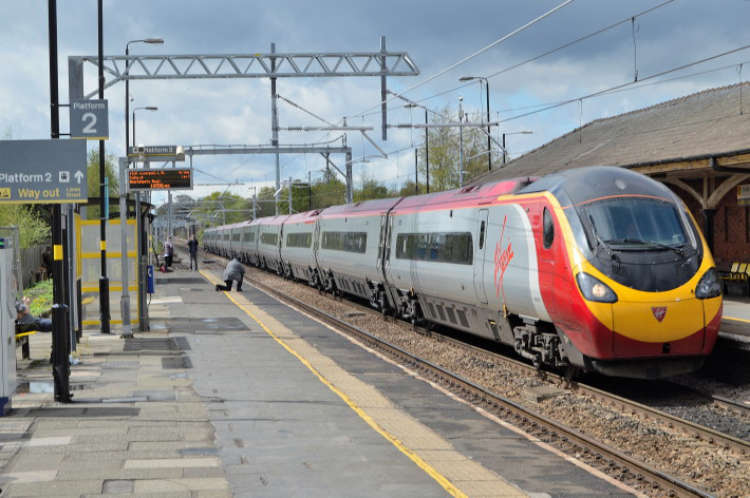
8D ASSOCIATION
The 8D Association is dedicated to promoting the history of the railways of South Lancashire, Merseyside and North Cheshire.
The Liverpool and Manchester Railway (LNWR).
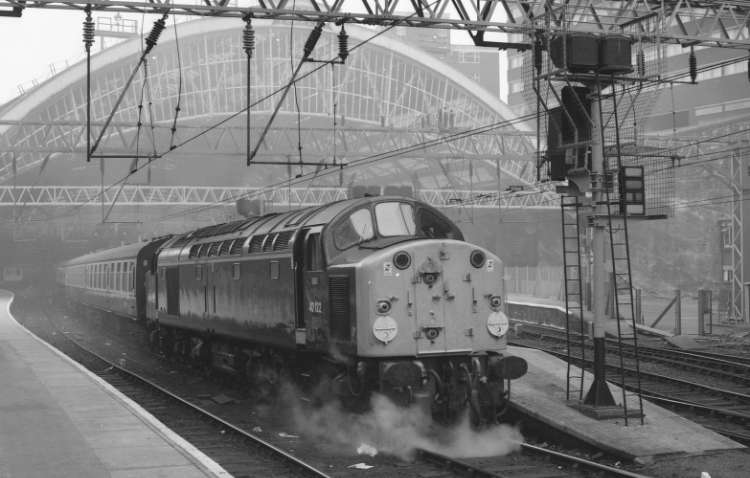
Introduction
The Liverpool and Manchester Railway was first mooted in 1822 by William James. The Bill was presented to Parliament in 1825 but was rejected in the committee stage by one vote. The biggest opposition to the building of the railway came from the Waterway Companies. A second Bill was presented in 1826 and the Waterway Companies were encouraged to become shareholders. This placated them along with plans showing a new route south of their land. The Bill was carried by Parliament gaining Royal Assent on 5th May 1826.
Construction.
Work began on the line in 1826 under George Stephenson, the resident engineer. With Chat Moss and the Wapping tunnel being the first projects. In 1827 the major embankments were started and in 1828 construction began on the Sankey and Newton viaducts. Slow progress worried the directors, but with extra shifts being worked the line was nearly complete by the beginning of 1830. The line was finished by June 1830 and officially opened on 15th September 1830. The cost for construction was £739,165, a tidy sum for 1830.
Ownership.
Until the railway system was nationalised by the Government on 1st January 1948 the line had only 3 owners in nearly 120 years of operation. It was initially the Liverpool and Manchester Railway Company until 1845 when the Grand Junction Railway Company took over. It then passed into the ownership of the London and North Western Railway in 1846. The LNWR continued to expand the 31 mile line.
Operation.
The sandstone that surrounds the City Centre of Liverpool had and would continue to provide engineering challenges. The original terminus for Liverpool was Crown Street passenger station until 1836 (when replaced by Liverpool Lime Street Station), but it remained open as a Goods Station until May 1972. All remains of the station have completely disappeared sadly.
Access to the docks was via the Wapping tunnel with passenger facilities being provided there also. The tunnel was an engineering marvel being whitewashed and lit by gas for its entire length. Stationary engines were provided at the Moorish Arch for trains leaving Wapping as the gradient in the tunnel was 1 in 48 for a mile, Wapping being at sea level and Edge Hill being 123 feet above sea level. Gravity was used to run trains down the tunnel and it must have been quite a ride considering the primitive braking used on these early trains. The tunnel and Wapping or Park Lane goods depot as it became known was in use until 1965, a remarkable 135 years from its opening.
Edge Hill was one of the original stations opened in 1830 (rebuilt in 1836 on present site) at the Liverpool end as can be seen today by the impressive station that was constructed. Edge Hill was chosen as it lies on the edge of the main body of sandstone that en-circles the city.
The present terminus at Lime Street was authorised in 1832 and completed in 1836. The station was enlarged in 1845 and re-opened under the ownership on the LNWR in 1851. The new station was a marvel of its time with a new 370ft trainshed one of the first to be constructed of iron. A stationary engine was provided at Edge Hill for departures due to the 1 in 97 gradient in the tunnel. Arrivals used gravity to gain access to the platforms with the use of special brake vans with their own attendants. Again probably a nervous descent into the dead end station. The tunnels were later opened out to provide ventilation when locos were capable of hauling trains up the gradient to Edge Hill.
By the time the railway had opened the Manchester terminus at Liverpool Road had been completed and was a functioning station.

Stations and the route today.
Departing from the impressive Lime Street station and through the tunnels the traveler arrives at Edge Hill now just another calling point. Upon leaving Edge Hill and its array of sidings the line passes through Olive Mount with its impressive cutting widened by the LNWR in 1871 due to high traffic volumes. In 1871 the section from Olive Mount to a point east of Huyton station was quadrupled such was the demand for rail. At Olive Mount the Bootle branch opened in 1883 can still be seen and is in use for access to the Docks.
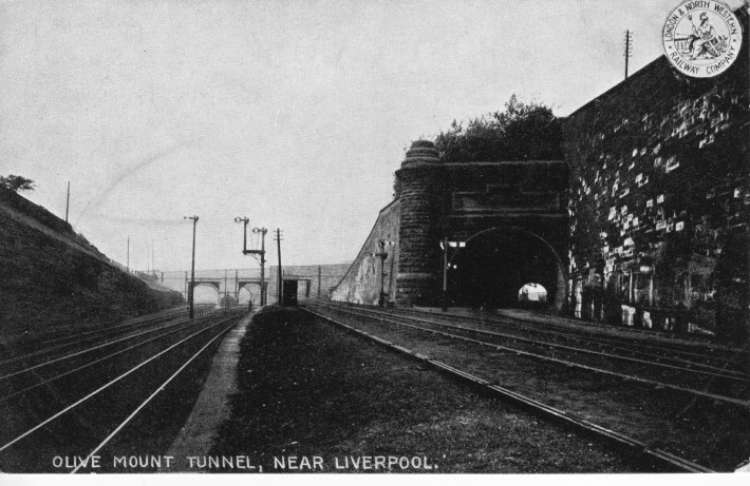
Wavetree Technology Park is one of the newest stations on the line and opened in conjunction with the building of the park adjacent to the line from which the station takes its name. The station opened on 13th August 2000. The park itself was built on the former Coal Concentration Depot.The station has a frequent service and is well patronised.
Broad Green is the next station re-built in the 1970’s in conjunction with the building of the M62 motorway.The station was reduced in size with only two platform faces reducing it from four.
The next call is Roby which has seen a vast change since the rationalisation of the 1960’s when the station was reduced to two platform faces from four. The two spare faces have been reconstructed, with the bricked up subway brought back into use and are now fully operational as the two up lines, one to Wigan North Western and the other to Rainhill and beyond.

The line opened for goods on the 1st February 1869 and for passenger traffic on the 1st April 1869. Moving along to Huyton station which has seen reconstruction of the platforms taken out of use in the 1960’s and fully operational once again. Sadly, the former LNWR signalbox which was at the west end of platfom 2 is now history, as it succumed to the electrification and re-signalling works.
We now pass the site of Huyton Quarry station opened in 1832 as one of the original stations but closed on 15th September 1938.
More information and pictures at:- Huyton Quarry
At Whiston a new station has been provided approx mid way up the 1:91 / 99 Whiston Incline which the station is well used by the local people.
The next station is the famous Rainhill with its equally famous skew bridge dating from the Rainhill Trails of 1829. Sadly the signal box to the East has been abolished recently but it still stands next to the former goods yard.

Lea Green new station is the next stop opened on 17th September 2000 with a large car park and bus interchange it is well patronised standing further east than the original station of the same name which opened as another of the original stations on 1st March 1831 closing to passengers on 7th March 1955 and to goods on 15th September 1958. The Station Masters house still survives as a private residence.
More information and pictures of the original Lea Green station

Passing the site of the recently removed intersection bridge we now approach St Helens Junction, although now not a junction. The scene here has changed dramatically with the loss of all sidings associated with the LNWR’s stores operation which used to be based here along with the demolition of the power station and colliery at Bold which dominated the local skyline.
Collins Green would have been the next stop opening around 1st March 1831 as one of the original stations on the line. It closed on 2nd April 1951 having been open for over 120 years.
More information and pictures at:- Collins Green

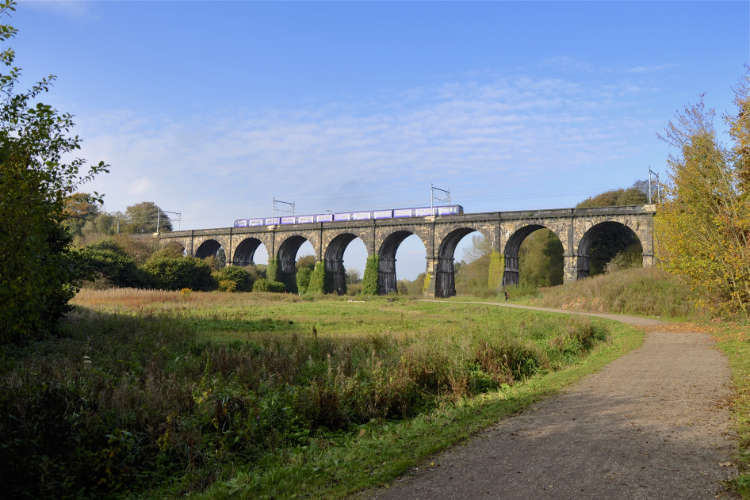
After crossing the Sankey viaduct, Earlestown is the next station with its mock Tudor waiting room still standing though sadly now not in use. There is a junction here which gives access to the West Coast Main line south and has in the past been used for the diversion of London bound trains out of Lime Street. At the east end of the L & M platforms there used to be a flat crossing over the main lines for access to Haydock colliery this was removed after the closure of Haydock. Immediately upon leaving Earlestown another junction joins the line from the WCML. This was the line used by Scottish and London Expresses before the line via Red Bank opened.
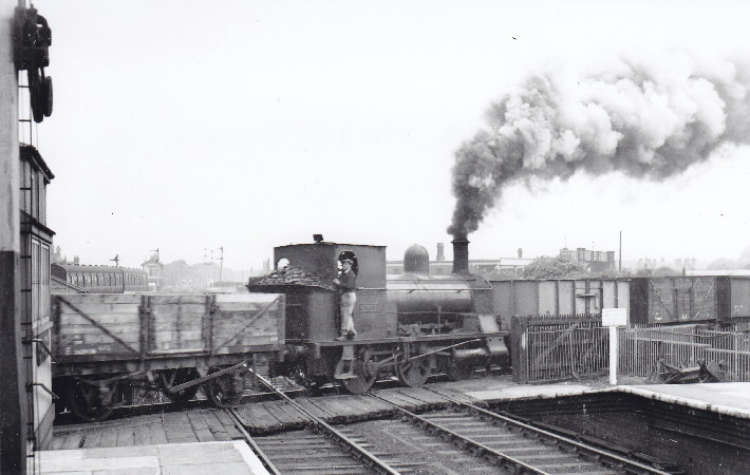
Reproduced with permission from the Industrial Railway Society.
Immediately after crossing the Newton viaduct we arrive at Newton Le Willows station elevated from the village it serves, butted up against the viaduct. Evidence of the former Motor Rail terminal can be seen as can the connection to the former Parkside colliery.
Just before the next station Parkside there is a junction to connect to the WCML north little used now by passenger trains it was once busy with trains to Preston and beyond.
Parkside station has stood on two sites close by the scene of the opening day accident when MP William Huskisson was struck by The Rocket and later passed away in Eccles. A recently restored monument stands at the site. Parkside station closed on the 1st May 1878.
More information and pictures at:- Parkside 1st site and Parkside 2nd site.
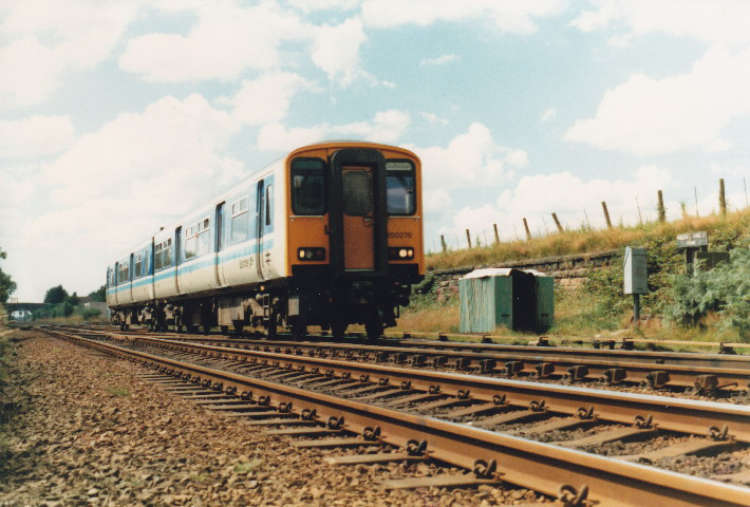
Passing now into open countryside the next station would have been Kenyon Junction, known as Bolton Junction until 1843. The station was a substantial affair opening around 1st March 1831and it was the junction with the Bolton and Leigh Railway. It closed to passengers on 2nd January 1961 and to goods on 1st August 1963. Nothing now remains of the station.
More information and pictures at:- Kenyon Junction
A couple of miles further east is the site of Glazebury and Bury Lane station which opened in 1831 as simply Bury Lane and closed on 7th July 1958 as Glazebury and Bury Lane. The station had two staggered platforms and simple LNWR wooden buildings. No trace of the station remains.
More information and pictures at:- Glazebury
The next engineering marvel of its day was the Chat Moss crossing. Stephenson managed to bridge this barren bog with nothing more than weaved mats to float the track on and a system of tar coated barrels for drainage.
Surprisingly for such a sparsely populated area three stations were initially provided on Chat Moss mostly built to serve the farmers working the land there. A fourth was provided later and it was this one that survived the longest.
The first was Flow Moss opening sometime after the Autumn of 1832 the station was open barely ten years and closed on 29th October 1842.
More information and pictures at:- Flow Moss
The second Lambs Cottage opening again around Autumn 1832 and closing on 29th October 1842.
More information and pictures at:- Lambs Cottage
Astley was the last of the stations to open on the Moss but outlasted the others by many years. It is named after the village that it served which is a considerable distance away. The station opened in around 1844/45 and remained open until 7th July 1958. In 1972 a new signal box was built on the site of the former westbound platform and continues to control the level crossing there today.
More information and pictures at:- Astley
Barton Moss station was originally opened by September 1831 on its first site but closed on 29th October 1842 to passengers and to goods on 1st May 1862. The LNWR then constructed a new station adjacent to the Barton Moss Level Crossing which opened on 1st May 1862 but this too closed after a relatively short life on 3rd September 1929.
More information and pictures at:- Barton Moss 1st site and Barton Moss 2nd site
Next we have Patricroft Station which is still functioning and with the increase in services, the station has been revived from the desolate place it was in the 70’s.
Just before the next station there is a junction for the Manchester Ship Canal which follows the line then dives under it at Weaste.
The next section of line is quite interesting there used to be 5 stations within the next 4 miles designed to attract commuter traffic to Manchester.
The first being the only one to remain open, Eccles. A place famous for its Eccles cakes and with a frequent service the station has seen a revival in the past few years and now has a healthy future.

Weaste was the second opening around 1831/32 it was one of the original stations at the time the line opened. The station would close just before nationalisation on 1st November 1947. The station site is now mostly occupied by the M602 Motorway and no trace of it remains.
More information and pictures at:- Weaste
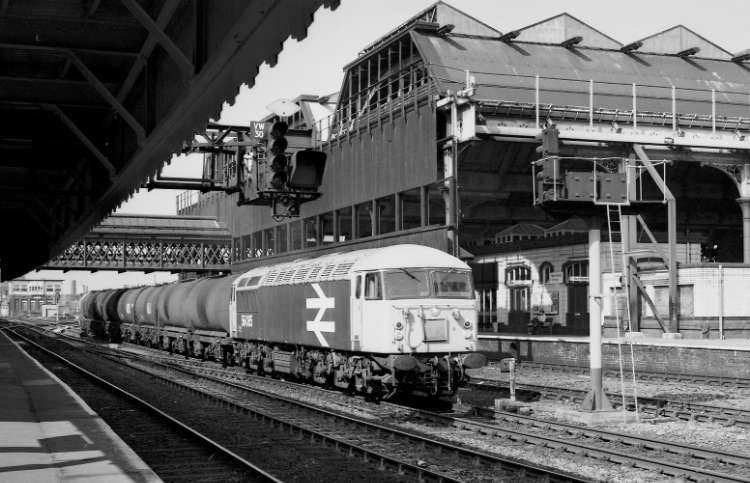
The third was Seedley opened as a commuter station but probably closed due to competition from the roads. Opening on 1st May 1882 it was a late addition, the station closed on 2nd January 1956. Part of the station wall survives but the majority of it lies under the M602 Motorway.
More information and pictures at:- Seedley
Cross Lane was the penultimate of the five starting life as a basic affair on 1st March 1831 but growing in size as the line developed. When the line was quadrupled at the end of the 19th Century the station was re-built along with the others to include 4 platform faces. It sadly closed to passengers on 2nd January 1956 but remained open for livestock deliveries until final closure on 20th July 1959.
More information and pictures at:- Cross Lane
Ordsall Lane is the final station of the five, it opened on 1st August 1849. Though a basic station when opened Ordsall Lane did develop with the line and at closure on 4th February 1957 had 5 platform faces. All traces were finally swept away at the end of the 1960’s.
More information and pictures at:- Ordsall Lane
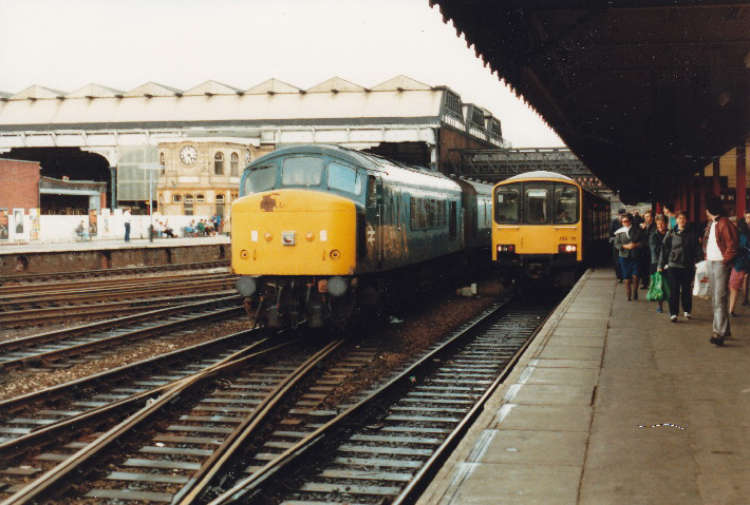
The line would have originally run now into Liverpool Road station which had opened in 1829. This terminus had proven too small for the amount of passengers and freight being carried. So a new terminus had to be built and in 1842 an Act was passed for the construction of a direct line from Ordsall Lane to Hunts Bank where the Liverpool and Manchester would meet end on with the Manchester and Leeds Railway. In 1844 a new terminus opened shared by the two companies, Manchester Victoria. The original Liverpool Road terminus which was used as a goods depot until closure in 1975 still stands today along with the original warehouses and forms part of the Manchester Science Museum. A short length of track enables the visitor to ride through the original station. The site has been well restored and is well worth a visit, oh and its free to enter.
More information and pictures at:- Manchester Liverpool Road
Today.
The line is still busy today with an intensive passenger service and numerous freight traffic originating from the Docks at Liverpool. Early March 2015 saw the OLE energised between Liverpool and Earlestown and Preston via St Helens Central. The first services started running on 5th March with a pair of former Thameslink Class 319’s operating on the Liverpool to Manchester Airport service. As more units have arrived from the south more and more of the workings are in the hands of the Class 319’s and also Class 323’s with workings between Preston and Liverpool via St Helens and several of the Manchester Airport and Victoria services as well as the service to and from Warrington Bank Quay Station.Unfortunately with the rebuilding of Broad Green station in-conjunction with the M62 project in the 1970’s there is now no room at this site to continue with quadruple track through to Edge Hill. It will remain to be seen if this creates a serious pinch point and how Network Rail will deal with it.
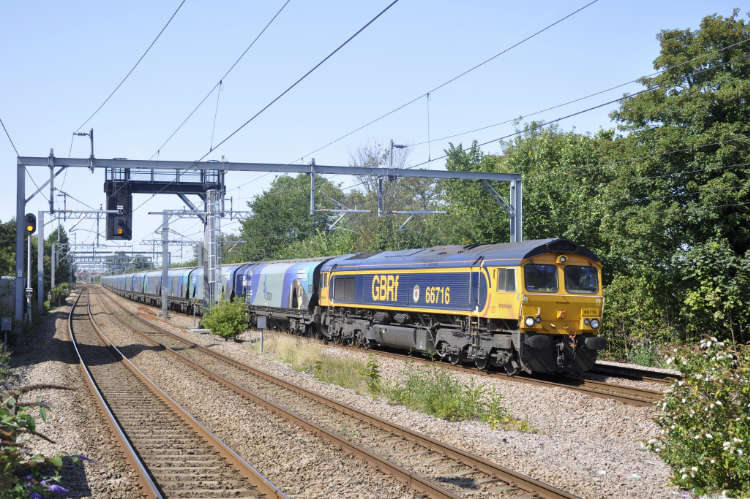

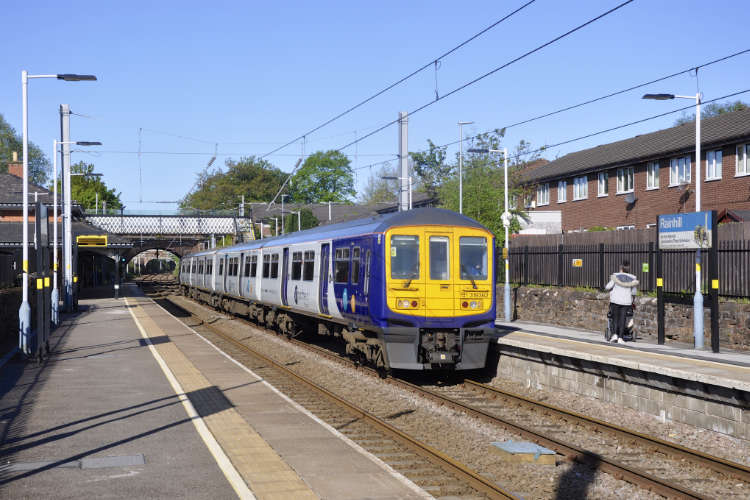
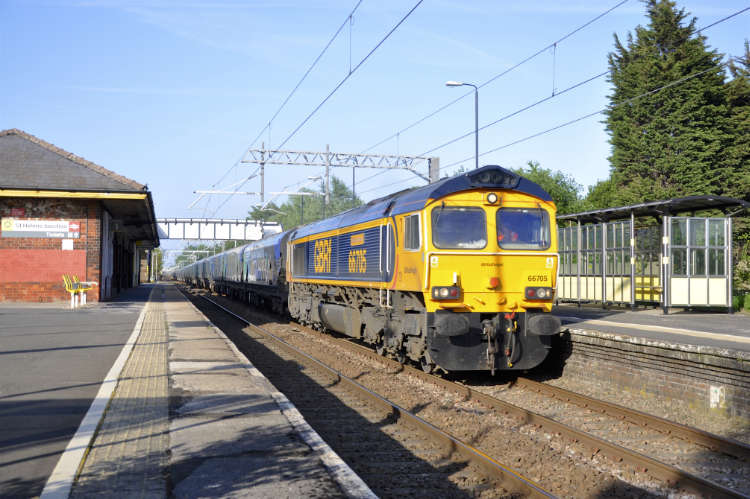
On 3rd May 2015 engineering work between Runcorn and Weaver Junction saw the line hosting 390 Pendolino’s working the services to and from London Euston. The services ran via Manchester Piccadilly and Stockport as the Earlestown curve had yet to be cleared for the units. Many people turned out to record the event with photographers and spotters mixing with bemused passengers at several of the stations along the route. In early July 2015 a Pendolino operated from Lime Street to Warrington via the Earlestown curve for gauging purposes.
